Sweden faced Finland in U19 Mens World Championships final 7.5. in Växjö, Sweden. In the semifinals Switzerland led by three goals with 8 minutes on the clock but Finland forced the game to the overtime and scored the golden goal. Sweden on the other hand won the Czech Republic 9-4 and although the Czechs led the game after the first period, in the end Sweden showed the difference in class. Finland cruised past Sweden in qualification round and with lots of talent and experience from Salibandyliiga and Divari, they started the game as favorites. The game ended with Finland winning 7-4 and although the score was somewhat even, Sweden never had a chance.
I analyzed the game from Sweden’s perspective with emphasis on the team level organization in different moments of play.

Moments of the game – the moments are the same in floorball as in football. We could add also attacking special teams (power play) and defending special teams (box play) to the chart but in this post we will concentrate on these main moments.
Sweden’s attacking organization problems – no structure and huge demands for individual player
Sweden had huge problems with their attacking organization throughout the game. Finland had chosen to press very often high with their wingers but with lots of space to exploit behind as the second line of defense positioned quite low. The ideal thing for Sweden would have been to create a 3v2 -overload against Finland’s two highest players or 2v1 against one or the other and get the ball to a player in positive body position immediately behind Finland’s pressing wingers. With that Finland would have had a lot of space to defend (almost 2/3 of the field). Sweden mostly started with back triangle – sometimes with two defenders and center higher in the middle – but without clear structure and plan from shift to shift where the ball would be played after initial dribbles to the middle.
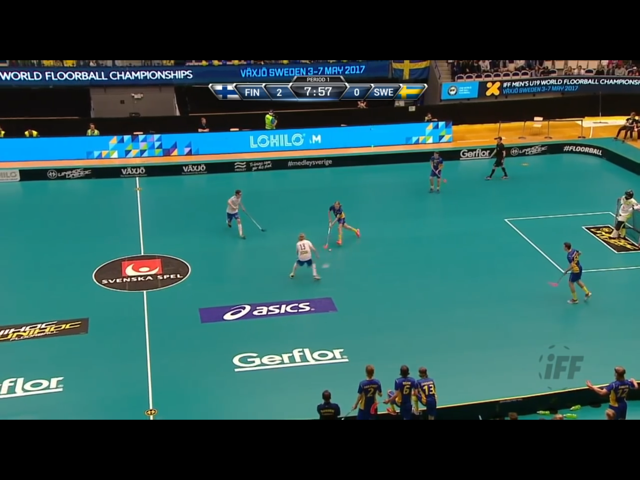
Sweden started the build up mostly with back triangle. As we can see from the picture, there is space behind Finland’s two pressing wingers but Sweden failed to use it throughout the game. In the picture, the center has started his dribble from the right and after that the ball would be dropped to either the left or the right defender, usually left. From then on the movements of the players without the ball varied a lot creating a huge challenge for the individual decision making.
The problems with the communication within the line started immediately after the backpass. Without clear structure where the players without the ball would move or position themselves after the backpass, the speed of play slowed down and Sweden was unable to break Finland’s press.

The passing options for the player with the ball are limited as Finland's left defender has stepped up to cut a possible long pass and the other two Swedish players are in unplayable positions.
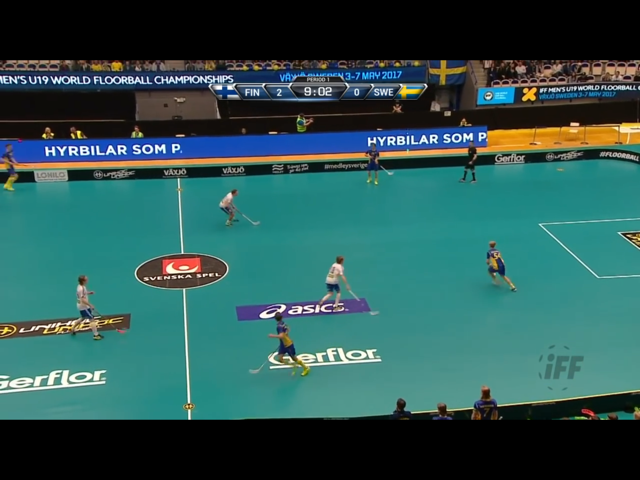
After the backpass, the off the ball movements of the Swedish attacking players varied from shift to shift.
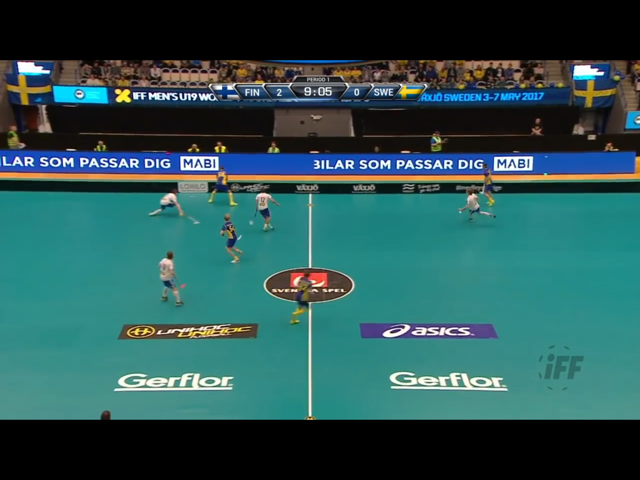
Without a clear plan how Finland’s press would be broken, Sweden were unable to create well-organized quality attacks and most of the time had to attack with numerical inferiority.
When Finland’s wingers pushed higher to press Sweden’s defender even more, Sweden ran into more trouble. Again, lack of structure and preparation for these moments showed and the co-operation between bottom three players (usually defenders and center) were random and miscommunications common.
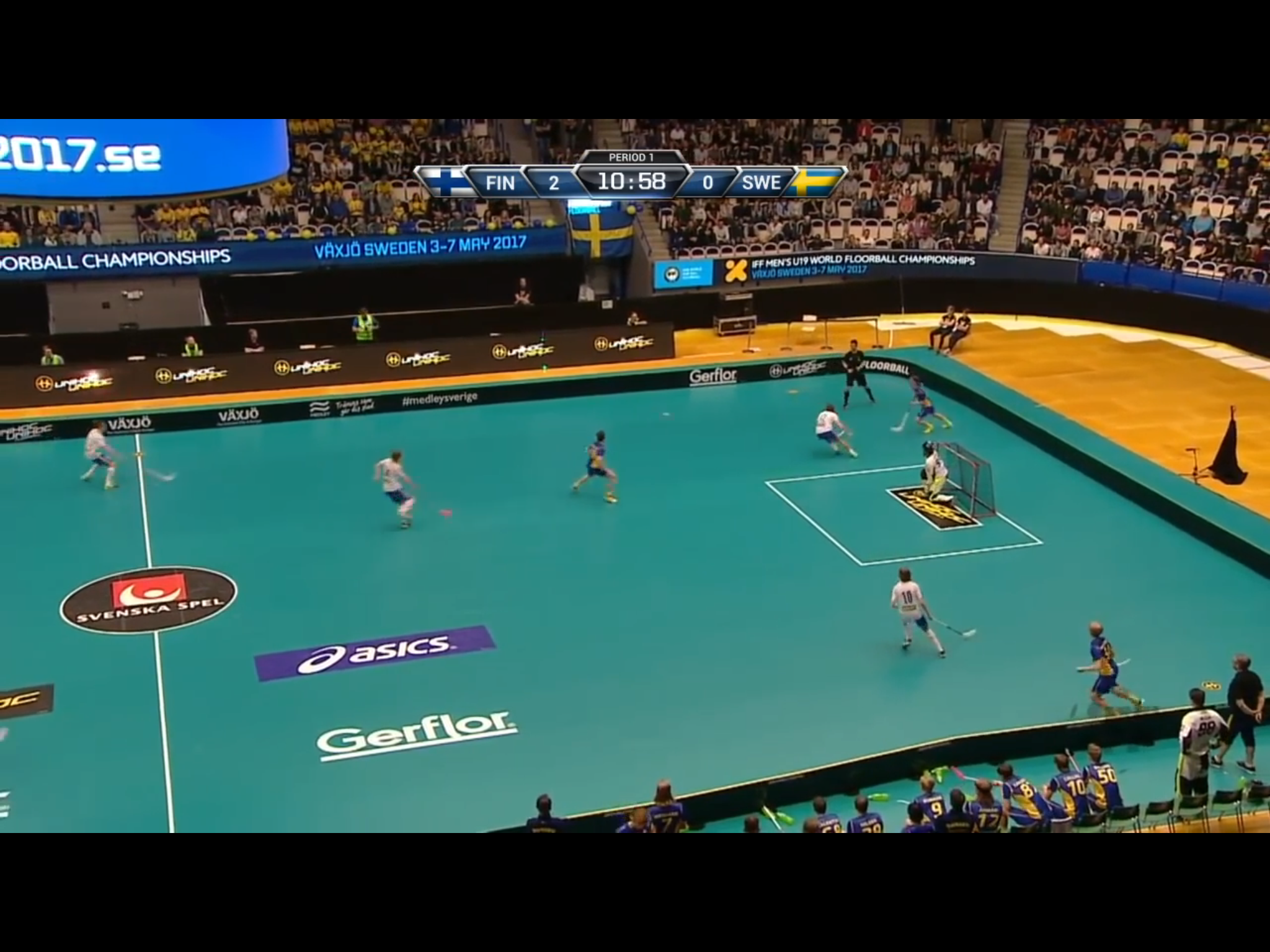
When Finland pushed to even higher press, Sweden didn’t have a clear solution for these moments. Finland was able to win the ball very often – either in Sweden’s defensive zone or after and badly organized and numerically disadvantaged attack. Note that for example the moment in the picture is not an individual mistake from Swedish defender. It is a communication problem within the line and especially Swedish back three.
Because of lack of organization and / or offensive strategy, Sweden’s attacks were mostly numerically disadvantaged and individual players were put under too much pressure. As a result there were a lots of turnovers because of miscommunication and Finland was able to control the game without big problems or challenges with their defensive game. It has to be said that Finland’s choice of defensive tactics – especially pressing – gave (theoretically) lots of possibilities for Sweden to break the first line of pressure and then play 4v3 and 3v3 attacks against more or less unorganized Finland with lots of space to defend. Good example of this was Sweden’s first goal. However Sweden lacked offensive structure and clear plan and without it, the moments when Sweden was able to exploit the space were rare and the execution of those moments were random.
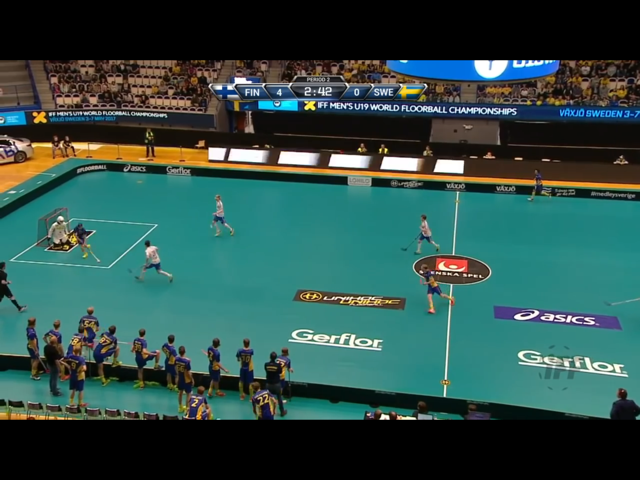
Simple first pass from the bottom to the right support opens up the whole field as Finland’s first line of press is unable to force the player to make a bad pass and the second line of defense is positioned too low. After that it was only up to execution.
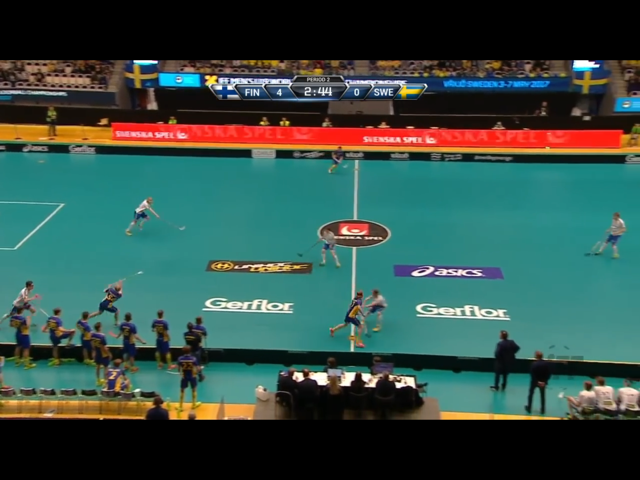
After the pass to the right, Finland's first defensive line was broken. Good execution with the diagonal pass to the left opens up lots of time and space and the attack ends with a quality finish and first goal for Sweden.
In the attacking zone Sweden more or less played 3v5 throughout the game as both defenders positioned themselves in the midline. Also the line wasn’t well organized when attacking, with big offensive and defensive balance issues. Because of this three things were bound to happen
1) As Finland was playing with man-orientated zonal defense and Sweden had numerical inferiority in the final third, the attacks were cut very short
2) Also, as both defenders were positioned in the midline, it was very hard for Sweden to trigger good counter pressing actions in negative transitions.
3) As the organization of the attacks were poor and both defenders were positioned so far away from the ball, it left Sweden with huge space in the middle for Finland to start their counter attacks after it had won the ball.
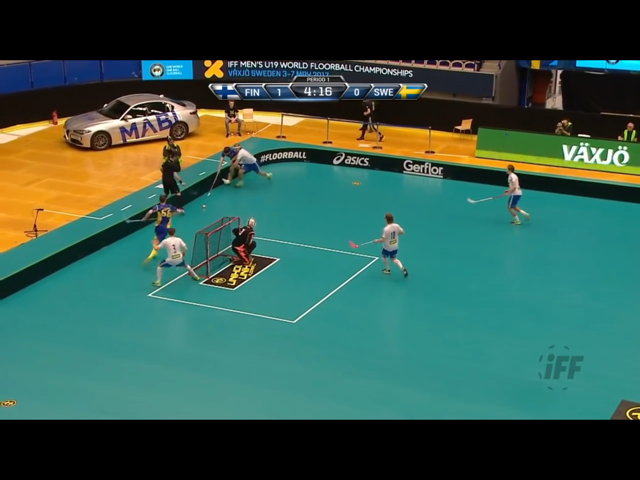
In the picture Sweden has 2v4 man disadvantage in the final third, no time and space and no balance.
Sweden had its best offensive moments at the end of the 2nd and the start of the 3rd period when especially the first line was able to break Finland’s pressing with couple of good organized attacks. As the first line clearly showed that it had the capacity to play as a unit and they could execute complex attacks, one has to wonder why it was the only one of Sweden’s lines to do that. Also it raises questions why even the first line couldn’t do that from shift to shift – of course there is also the opponent in the rink who tries to make things harder for the other team. Nevertheless, there should be signs of structures and organization even when not well executed. Sweden didn’t have those.
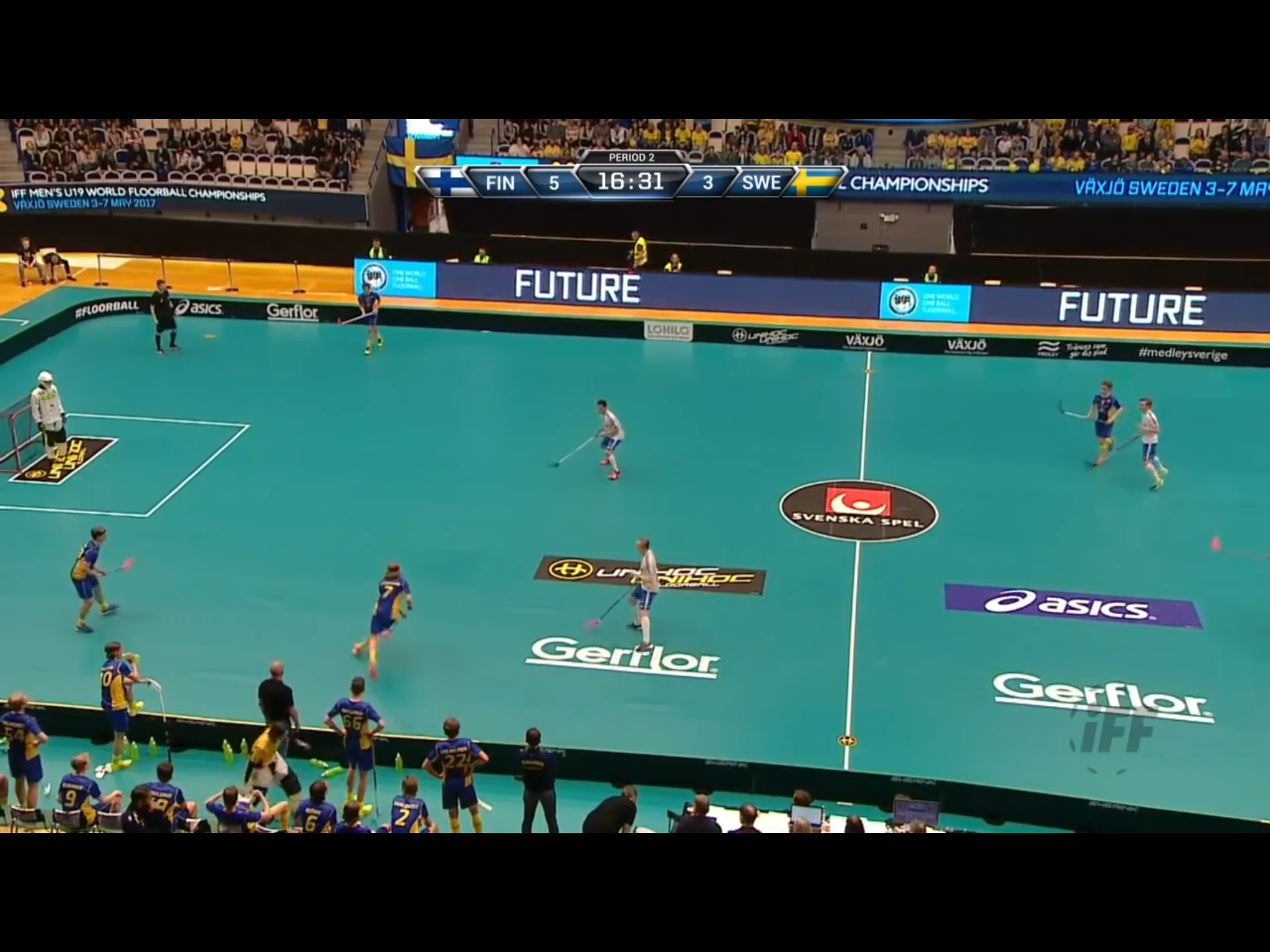
This organized attack in the start of the third period from Sweden’s first line suggests that at least the first line had some plans how to break Finland’s defence. While it is hard to analyze from the broadcast where the Sweden’s top winger was positioned at the start of the attack, the other winger’s duty seemed to be to overload the central space in Finland’s defensive zone and create communication problems for Finland’s weak side defender (right in this picture) and center.
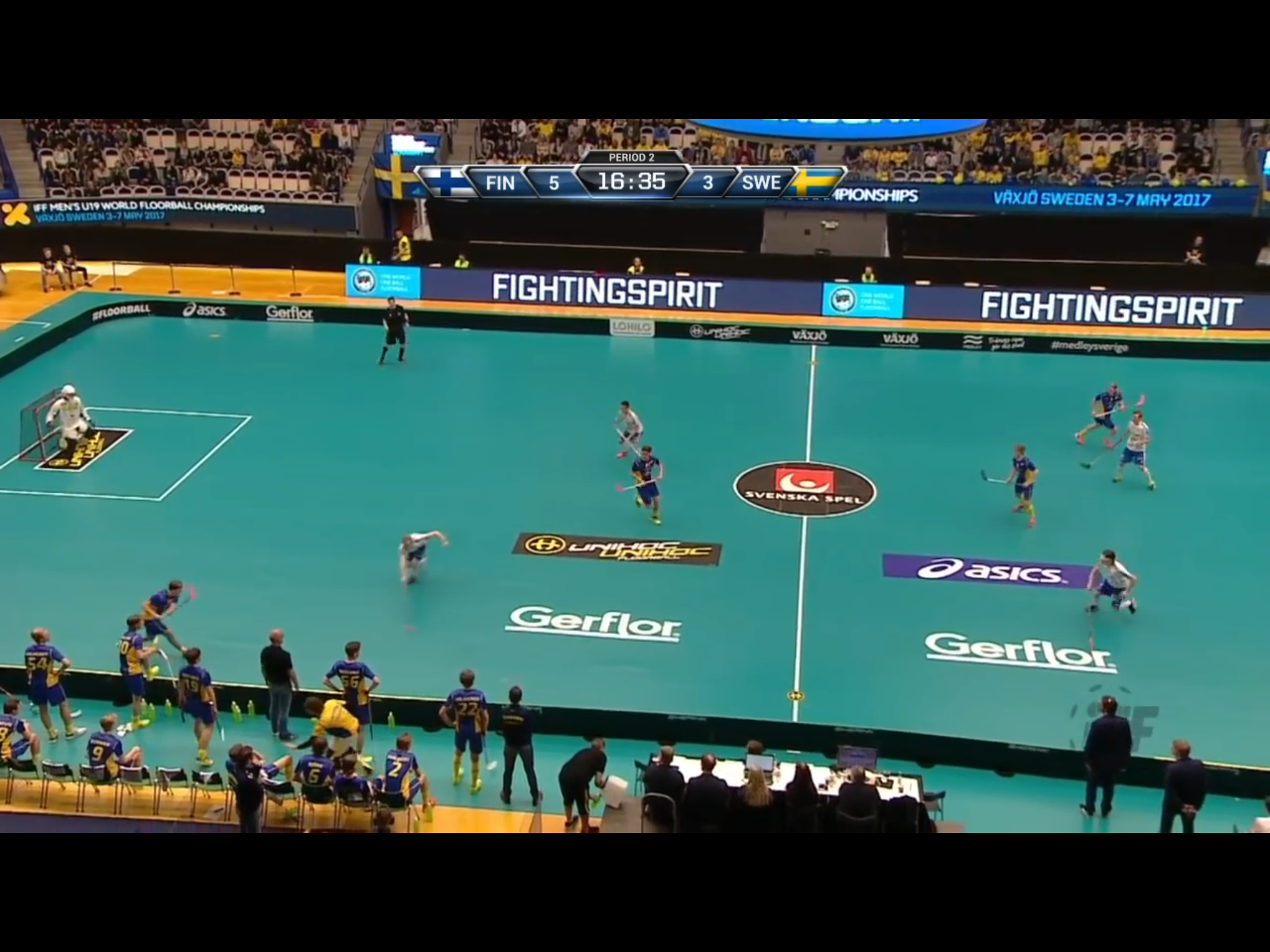
Sweden’s center Weidman continued his run without the ball after the backpass. The left defender challenged the central space with the ball, dropped it to the right defender who played it deep.
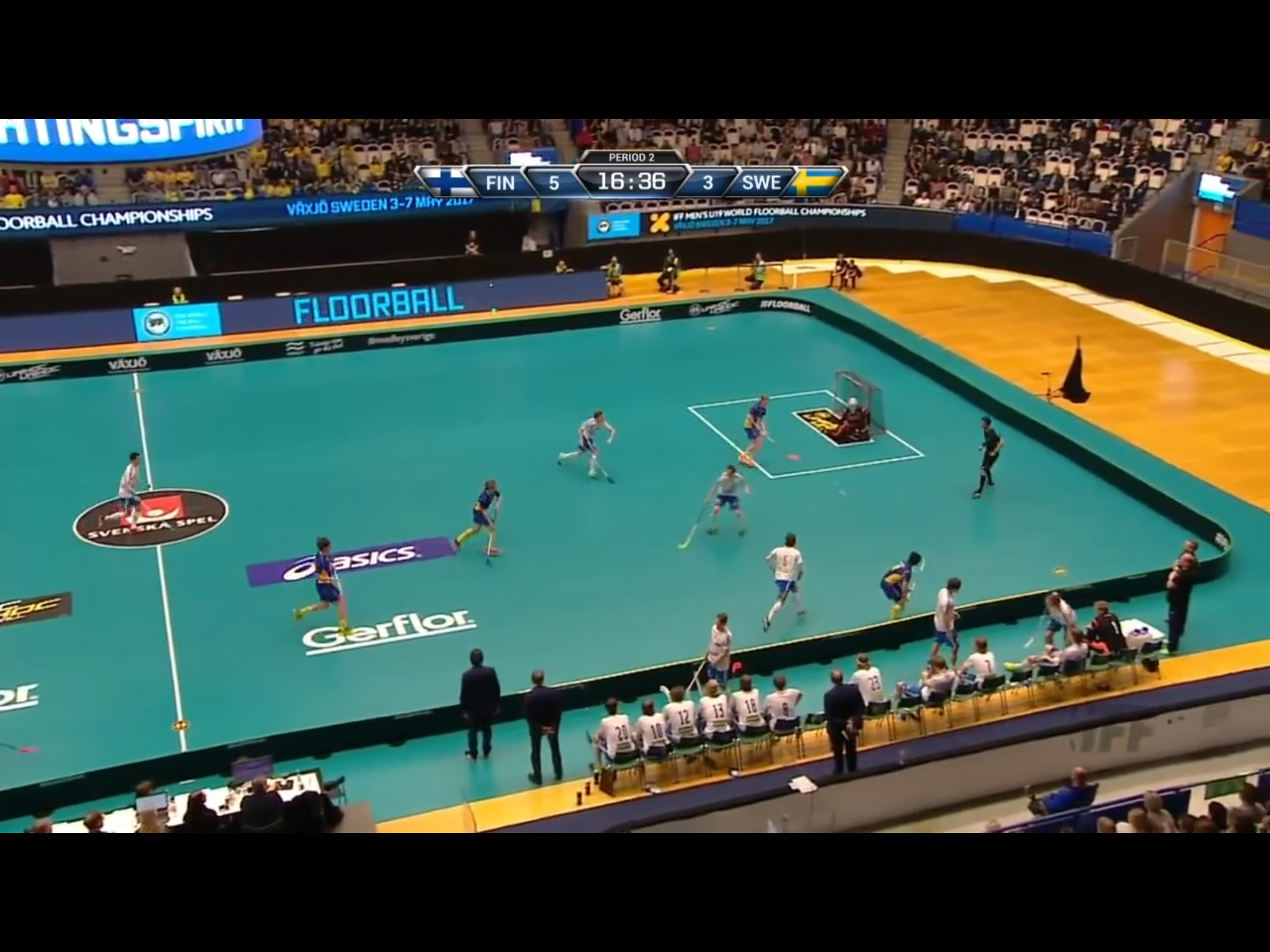
This time Finland’s center and right defender failed to communicate in time leaving Weidman alone with the goaltender.
It is safe to to argue that the Sweden’s coaching staff didn’t think the other lines could perform at the sufficient level and / or the teaching process of these organized attacks were not good enough.
”You haven’t taught until they have learned.” – John Wooden
Defensive organization – a bit outdated and not well executed
Sweden chose to play traditional mid press zonal 2-1-2. While it definitely has advantages as a system – especially with Swedish team as it is so deeply rooted in Swedish floorball – it also has some issues which Finland with its more experienced roster and better offensive organization were able to exploit.
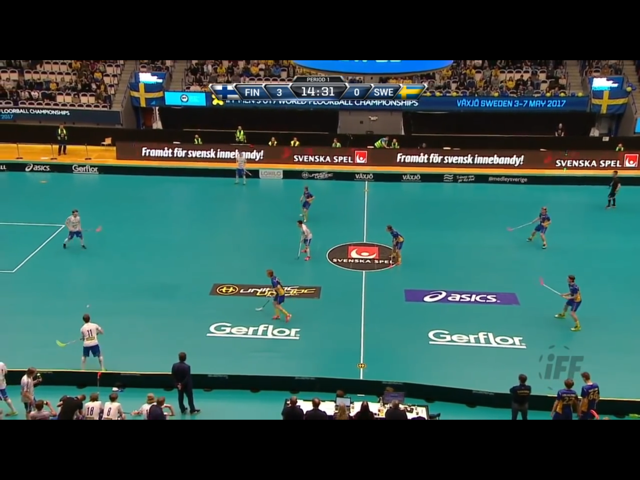
Now this is more or less matter of taste. This kind of mid/low pressing zonal 2-1-2 is very common in Swedish floorball and it is safe to assume that it is quite easy for the coaching staff to organize and get all the players to the same page. One can argue that Sweden could have made Finland’s build up a bit more difficult if it wouldn’t have kept both of its defenders very low defending one Finnish attacker (it is actually 3v1 for Sweden in Sweden’s defensive zone). Maybe it would have been more difficult for Finland to break the press if the other defender would have been assigned to create another two-men pressing line with the center (making the formation mid/low press zonal 2-2-1), but it was not the biggest issue in this game.
One of the decisions Sweden’s coaching staff had made was that in their own defensive zone Sweden would double team Finland’s ball carrier in the corner with their defender and game-side winger. While this makes sense in that perspective that Sweden could a) limit opponents options and b) win the ball, it also makes the positive transitions less effective. To win the game with a bit less quality in the roster and weaker offensive organization, Sweden would have needed to be brutal in transition moments. As each moment of the game, whether it is attack, defense or transitions, does not happen in a vacuum the failings in one moment will affect the executions and possibilities of high quality floorball actions in other moments.
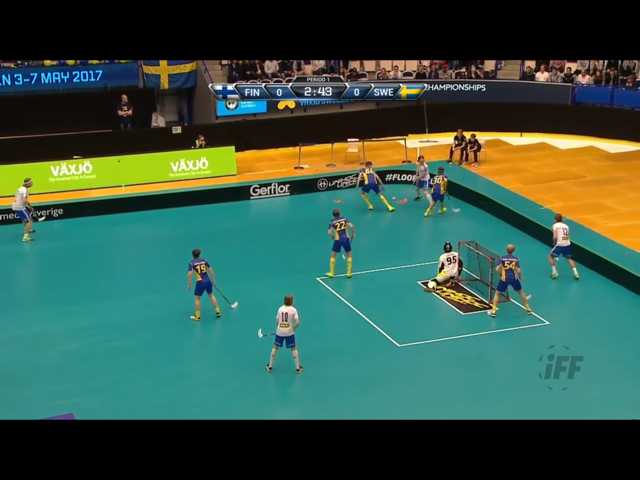
Sweden double teamed Finland's ball carrier in the corner but at the same time the decision took a lot of edge off from their positive transition moments.
One advantage in zonal 2-1-2 – and in every other zonal system as well – is that in positive transitions the line knows more or less exact positions of the teammates and it makes decision making and even automatic floorball actions easier and at the same time, faster. Sweden’s decision to double team in defensive zone corners made the possible transitions less dangerous because it sacrificed one attacking player very deep in their own zone. As the center was assigned to take care of the central areas (and by the way, center’s body position was almost always negative in relation to a) Finland’s weak side players and b) Finland’s goal) and the weak side defender’s duty was to play the front of the net, it left only weak side winger in good position in case of Sweden winning the ball back. This does not make good sense as a tactical decision.
The same decision also left Finland’s game-side defender with lots of space to exploit. Finland didn’t use this space very effectively but if it would have, it would have opened up many scoring chances for the game-side defenders and it would also had made Sweden’s positive transition moments even harder as the Finland’s defender would have been in ideal position to cut the counters short.
Now, as Finland had a lot better offensive organization, it could and probably would have overloaded Sweden’s defensive zones corners if Sweden would have pressured the ball with only their game-side defender. While this is true and possibly one reason why Sweden decided to bring another player to double team Finland in the corners, there are other ways to deal with the situation. One possible solution in these kind of overload situations would have been to make the weak-side defender come to help the game-side defender. That would have of course made the front of the net more vulnerable and the center’s defending space larger. But. We have to remember that if the pressure to the ball carrier is strong and the other defender would have been there to cover and create an even situation, it is one thing to know there is possible space in front of the net and other to take advantage of it.
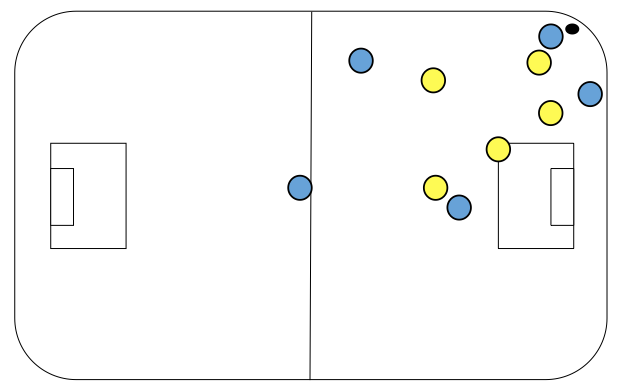
By ordering the weak-side defender to help the game-side defender in overload situations, Sweden’s wingers would have been in more favorable positions in case of positive transition and counter attack.
There is always possibility to play more man-orientated system or mixed man/zonal defense which would make attacking teams overloads more difficult, but that is not very common tactics in Sweden and probably was not available tool for them. Of course totally different question is why is that so?
Transitions – victims of problems in attacking and defending
Then there are the transition moments. As mentioned earlier, the moments of the game are all interdependent and they do not happen in a vacuum. So everything that happens before the team wins the ball affects positive transition moments and everything that happens before the team loses the ball affect negative transition moments.
As Sweden’s coaching staff prepared to play against Finland, they probably accepted that they were the underdogs. Finland had a lot of quality in their team and it was a favorite. But in a single deciding game anything is possible and with Sweden’s players quality, always possible. One strategic choice is to have a counter attacking game plan with strong emphasis on the transition moments. Now, while we don’t know if Sweden even thought of this, it certainly failed to make the best out of the transition moments (we also have to remember that Sweden still is the biggest and strongest floorball country and to play with ”minor team” tactics, it might not be satisfying way to win or ”The correct way to win”).
But here’s the thing. We can’t really analyze transitions separate from the attacking organization or defensive organization as mentioned earlier. Sweden had so many problems in their offensive organization that they were doomed to fail in negative transitions, especially if they wanted to use effective counter pressing in their attacking zone. With players here and there and defenders playing ”safe” at the midline, there were no chance to organize the line fast enough to the counter pressing moments. While Sweden’s defense was a lot better organized than their attacks, it also had earlier mentioned problems if they truly wanted to be strong in their counter attacking game.
Conclusion
Sweden played however one moment of the game well – their power play. We also saw in their power play that Sweden had lots of skill in their team. Good power play kept the end result somewhat pretty but the difference between the teams were huge. What the Sweden lacked was not physicality as their head coach said after the game. Sure, Finland had some experienced individuals hardened in the mens games but it certainly was not the biggest reason to Sweden’s lackluster effort. No, the biggest reason for Sweden’s defeat was their total lack of organized offensive tactics and strategy. This is at the same time surprising and not surprising at all. It still is a common thing in floorball as a sport that the tactical side of the game – especially organized offensive tactics – is overlooked and even seen as a threat for player development. Nothing could be further from the truth. On the contrary, if the coaching staff organized the teams offensive game well, it would give the players the possibility to perform at their best level.
There has also been some arguments heard from Sweden that they should maybe modernize their defensive game. This is a good point and one thing Sweden should consider. But the main thing would be to modernize the offensive organization and the preparation process leading to the World Championships. The way to put some pressure on Finland is to find players who are good at playing with teammates, good at linking themselves within the line and who are good decision makers with and without the ball – players with fast-thinking brains. Put these kind of players together with a good offensive and defensive organization and Sweden will have a team that can perform with quality and ability to adapt. Will they win? It is always possible and it is possible even without major changes in the preparation. Would it be more probable? Definitely.
Perttu Kytöhonka (@pkytohonka)
